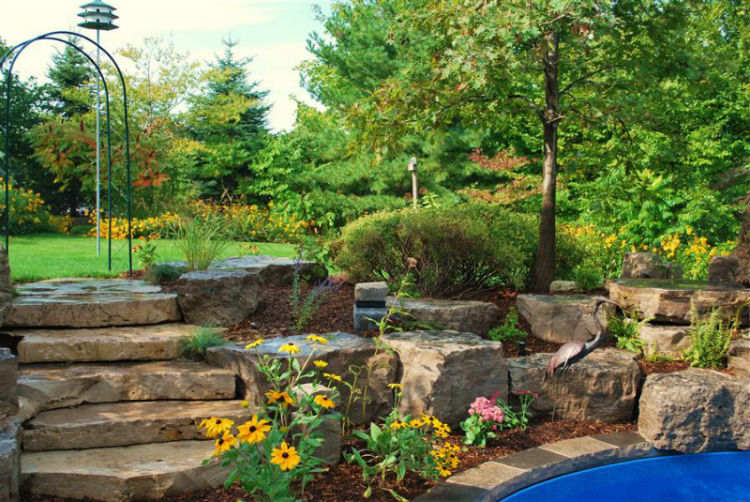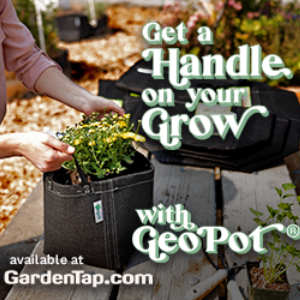
Before the installation of a landscape project Dr. Carl Whitcomb recommends the following steps.
Pre-Installation
Step 1
Evaluate soil internal drainage with percolation test. Dig a hole 12 inches deep. Fill with
water, twice the same day. Wait 24 hours from last filling and note water level. If water is still
present – drainage must be provided.
Step 2
Conduct a soil test for chemical analysis of fertilizer needed.
Step 3
If water quality is at all questionable, such as from some wells or when effluent water is used, a water quality test (chemical analysis) should be done. Dissolved minerals in water can influence plant growth.
Installation
Step 1
Install drainage if needed as determined by percolation test.
Step 2
Incorporate any fertilizer necessary as shown by the soil test — especially calcium, phosphorus, magnesium or sulfur, or as needed to compensate for irrigation water quality.
Step 3
All planting holes should be dug at least twice as wide as the root ball or wider, but no deeper than the root ball to avoid settling. Where drainage is marginal, all plants should be planted shallow or in mounds or berms. Replace the existing soil around plants to a firm, but not compacted, condition. Aeration of the soil is very important, yet large air spaces are to be avoided.
Step 4
Use no soil amendments except in very specific conditions of raised or amended beds for plants with very limited root systems. If the existing soil is especially poor, remove and replace it with good field soil or place at least six inches of good field soil over the entire site before planting.
Step 5
Stake trees only where absolutely essential. For taller plants that must be staked, use a three or four wire system with a protective cover over the wire and secure the stem from movement. Leave the stakes in place no longer than one growing season.
Step 6
Install expandable stem protectors on all trees and any shrubs with exposed stems that may be damaged by string trimmers – weed eaters.
Step 7
Do not arbitrarily cut back the top of any plant. Prune only damaged limbs or branches with weak forms (narrow V’s). Do not ‘flush cut”. Do not paint wounds.
Step 8
No root-bound container grown plants should be accepted. If you remove a container and see only a mass of roots that were pressed snugly against the container sidewall and the roots circle more than ½ the root ball diameter, do not purchase it or send it back, as it will do poorly.
Step 9
Good container stock is preferred– as there is no root loss at the time of transplanting and planting can be done any time of year, even in mid-summer, provided water is monitored and provided as needed.
Step 10
Proper watering is critical to the establishment of plants in the landscape. Excess water, especially where drainage is marginal or poor, can be as undesirable as insufficient water. Container grown plants must be watered with a moderate volume but frequently, until they are established.
Step 11
Fertilize all landscape plants as soon as installation and one thorough watering is completed.
If soil tests have been done and phosphorus or other non-leaching fertilizers have been incorporated, only nitrogen should be applied. Fertilize all landscape plants once heavily in the spring and once at a moderate rate in the fall, every year. Urea, 46-0-0, nitrogen works well and is often all that is needed. Do not use 10-20-10 repeatedly, as excess phosphorus will accumulate in the soil and stunt plant growth.
Step 12
Mulch all exposed soil surfaces with conifer bark, no less than two inches and not more than four inches with coarse, well aerated mulch. Hardwood bark or wood chips are suitable in areas where soils are acidic, but unacceptable where soils are already alkaline. Never, place plastic sheeting beneath any mulch.
This article is based on research and scientific principals from Establishment and Maintenance of Landscape Plant II, by Carl Whitcomb PhD. For more information visit DrCarlWhitcomb.com.
Related Articles & Free Email Newsletter Sign Up
6 Easy Ways to Create a Beautiful Home Landscape
Proper Mulching is One of the Best Things You Can do for Your Plants



Comment here